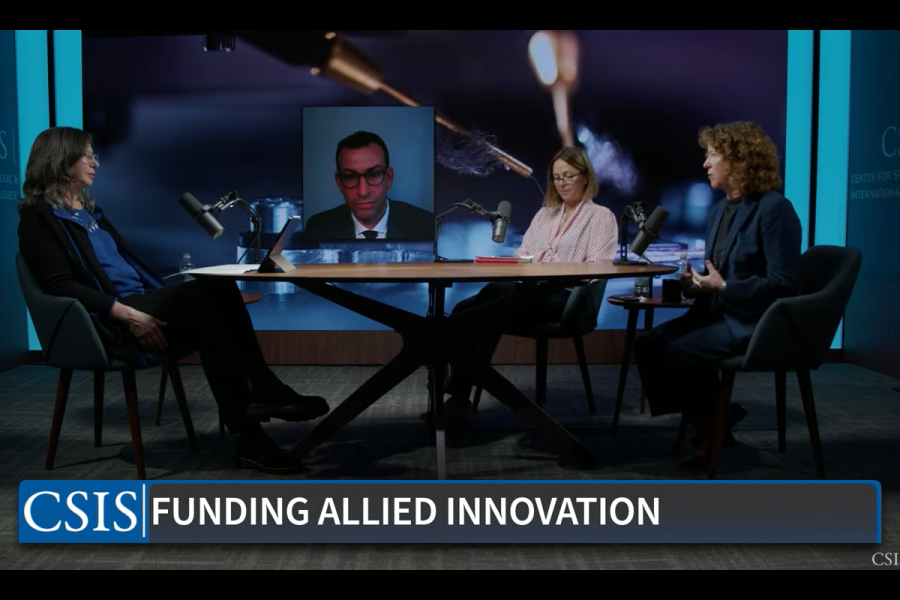
Key Takeaways:
The Alliance’s Technological Leap Forward
In an era of rapidly evolving global threats, the North Atlantic Treaty Organization (NATO) is taking bold steps to revolutionize its technological capabilities. Drawing inspiration from the innovative practices of air forces worldwide, NATO is embarking on a transformative journey to supercharge its innovation ecosystem. This strategic shift promises to reshape the alliance’s approach to defense and security in the digital age.
Embracing a Culture of Innovation
NATO’s tech revolution is not just about adopting new gadgets; it’s about fostering a culture that encourages creative thinking and rapid problem-solving. By looking to air force models, the alliance is learning to embrace failure as a stepping stone to success. This mindset shift is crucial for developing cutting-edge technologies that can respond to complex, ever-changing security challenges.
Rapid Prototyping and Agile Development
One of the key lessons NATO is incorporating from air force innovation strategies is the importance of rapid prototyping. This approach allows for quick iterations of new technologies, enabling NATO to test and refine solutions in real-world scenarios. By adopting agile development methodologies, the alliance can respond more swiftly to emerging threats and opportunities.
Collaborative Partnerships
NATO is actively forging partnerships with tech startups, academic institutions, and industry leaders. These collaborations bring fresh perspectives and innovative ideas to the table, accelerating the development of groundbreaking defense technologies. By tapping into diverse pools of talent and expertise, NATO is positioning itself at the forefront of technological advancement.
Leveraging Artificial Intelligence and Data Analytics
Artificial intelligence (AI) and advanced data analytics are at the heart of NATO’s tech revolution. These technologies offer unprecedented capabilities in areas such as predictive maintenance, threat detection, and strategic decision-making. By harnessing the power of AI, NATO aims to enhance its operational efficiency and maintain a technological edge over potential adversaries.
Enhancing Cybersecurity Measures
As NATO embraces digital transformation, cybersecurity remains a top priority. The alliance is investing heavily in developing robust cyber defense capabilities, drawing on lessons learned from air force cyber units. This includes implementing advanced threat detection systems and training a new generation of cyber warriors to protect critical infrastructure.
Modernizing Command and Control Systems
Inspired by the sophisticated command and control systems used in modern air operations, NATO is upgrading its own infrastructure. These improvements will enable faster, more accurate decision-making across the alliance, enhancing its ability to coordinate complex multinational operations in various domains.
Interoperability and Standardization
A key challenge in NATO’s tech revolution is ensuring interoperability among member nations’ systems. By adopting common standards and protocols, NATO is working to create a seamless technological ecosystem that can function effectively across borders and military branches.
Investing in Future Technologies
Looking ahead, NATO is placing bets on emerging technologies that could reshape the future of warfare. From quantum computing to hypersonic weapons, the alliance is exploring a wide range of innovative concepts. By staying ahead of the curve, NATO aims to maintain its strategic advantage in an increasingly complex global security landscape.
Sustainable and Green Technologies
Recognizing the importance of environmental sustainability, NATO is also investing in green technologies. This includes exploring renewable energy solutions for military operations and developing eco-friendly alternatives to traditional defense systems. These efforts not only reduce the alliance’s environmental footprint but also enhance operational resilience.
Training the Next Generation
To fully leverage its technological advancements, NATO is overhauling its training programs. Drawing inspiration from air force academies, the alliance is implementing cutting-edge simulation technologies and virtual reality training systems. These tools help prepare personnel for the complexities of modern warfare and ensure they can effectively utilize new technologies in the field.
Conclusion
NATO’s tech revolution, inspired by innovative air force practices, marks a significant shift in the alliance’s approach to defense and security. By embracing rapid innovation, fostering partnerships, and investing in cutting-edge technologies, NATO is positioning itself to meet the challenges of the 21st century head-on. This transformation not only enhances the alliance’s military capabilities but also reinforces its commitment to peace and stability in an increasingly unpredictable world. As NATO continues to evolve, its tech-driven approach will undoubtedly play a crucial role in shaping the future of global security.
Frequently Asked Questions
Source: insidertechno.com